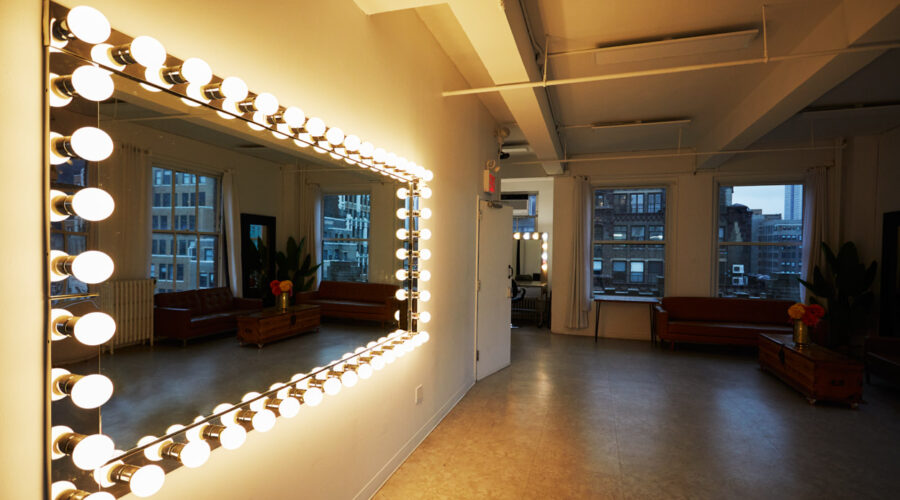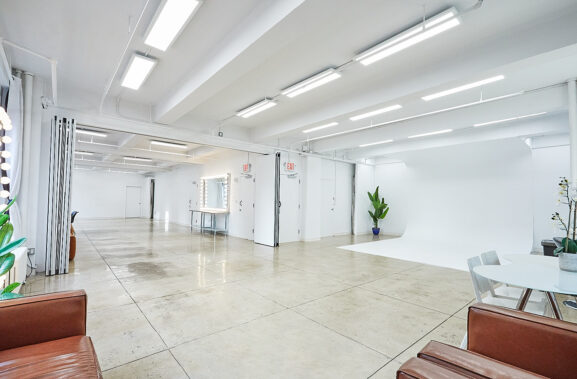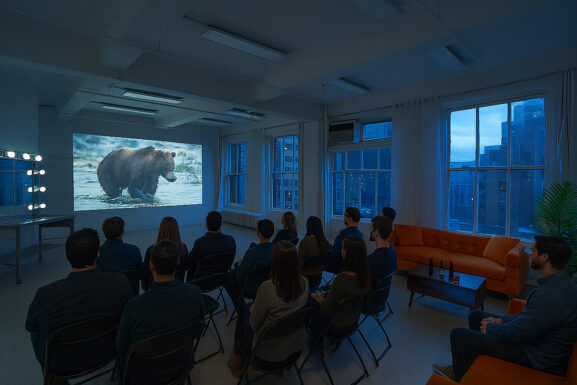How to Set Up Lighting in a Photography Studio: A Step-by-Step Guide for Professional Results
Lighting is the foundation of professional photography, and knowing how to set up lighting in a photography studio can make the difference between an average image and one that truly stands out. At Love Studios NYC, we’ve seen firsthand how the right lighting setup not only determines how well your subject is illuminated but also shapes mood, depth, and color accuracy. Whether you are working on portrait photography, product shoots, or creative editorials, understanding how to position lights, control shadows, and balance brightness is essential for producing high-quality results. In a professional studio environment like ours, you have complete control over light sources such as continuous lighting, strobes, or LED panels, allowing you to create consistent conditions no matter the time of day or weather outside. However, success doesn’t come from simply switching on a light; it requires careful planning, knowledge of different lighting types, and the ability to adapt setups for various creative goals. In this guide, we’ll break down proven techniques, practical tips, and professional strategies that will help you master your studio lighting setup and achieve consistent, visually striking photographs every time.
Introduction: Why Proper Studio Lighting Setup is Essential for Great Photography
Lighting is one of the most powerful tools a photographer can control in a studio. Whether you are shooting portraits, product images, or creative compositions, the way light is placed and shaped has a direct impact on the final image. Without a proper lighting setup, even the most advanced camera and lens will not deliver the quality you expect. A well-planned studio lighting arrangement improves clarity, creates the right mood, and allows you to highlight your subject’s best features. It also saves you valuable time in post-production because good lighting minimizes the need for heavy editing. For photographers renting or owning a studio, mastering lighting techniques ensures consistency from one shoot to the next. In this guide, we’ll cover the different types of studio lighting, essential gear, step-by-step setup methods, and expert techniques to help you work efficiently while producing professional results. By the end, you’ll have a clear understanding of how to set up lighting in a photography studio, whether you are just starting or looking to refine your current workflow.
Understanding the Main Types of Photography Studio Lighting
Continuous Lighting for Studio Photography
Continuous lighting provides a constant source of illumination, allowing you to see exactly how the light falls on your subject before taking a shot. This makes it a preferred choice for beginners, as well as for photographers shooting both video and stills in the same session. LED panels, fluorescent softboxes, and tungsten lights are common examples. Continuous lights are easy to adjust in brightness and angle, giving you full control over the scene in real time. However, they generally produce less output compared to strobes, meaning you may need higher ISO settings or slower shutter speeds. For studio portraits, continuous lighting can create a softer, more natural look, making it ideal for relaxed and lifestyle-themed photoshoots.
Strobe Lighting for Professional Photography
Strobe lights, also known as flash units, deliver short bursts of high-intensity light. They are excellent for freezing motion and producing crisp, detailed images, especially in commercial and product photography. Strobes are powerful, which means you can use lower ISO settings for cleaner images. They also give you the flexibility to overpower ambient light when necessary. The downside is that you cannot see the exact lighting effect until the strobe fires, although most units come with a modeling light to help with positioning.
LED Lighting for Studio Shoots
LED lighting is increasingly popular in studios for its energy efficiency, low heat output, and accurate color rendering. Modern LED panels offer adjustable color temperature, making them versatile for different shooting styles. They combine the constant output of continuous lighting with the efficiency and portability that many photographers value.
Essential Equipment for a Professional Photography Lighting Setup
Light Stands and Mounts
Stable light stands are the foundation of any lighting setup. They hold your light sources at the desired height and angle without risk of movement during a shoot. C-stands offer heavy-duty stability, while lightweight stands are better for smaller spaces or on-location work.
Light Modifiers for Studio Photography
Modifiers help shape and control light. Softboxes diffuse light for soft shadows, umbrellas spread light for even coverage, and beauty dishes create contrast with focused highlights. Using the right modifier can completely change the mood of a photo.
Reflectors and Diffusers
Reflectors bounce light back onto your subject to fill shadows, while diffusers soften harsh light. They are cost-effective and easy to position anywhere in the studio.
Background Lighting and Backdrops
Lighting the background separately adds depth and prevents shadows from distracting the viewer’s eye. Seamless paper, fabric backdrops, or textured panels each offer different effects.
Step-by-Step Guide on How to Set Up Lighting in a Photography Studio
Step 1 , Start with One Light Source
Begin with your key light so you can see how it shapes the subject. This helps you understand shadow placement before adding more lights.
Step 2 , Position Your Key Light
Place the main light at a 45-degree angle to your subject for balanced highlights and shadows. Adjust height to avoid unflattering shadows under the eyes or chin.
Step 3 , Add Fill Light to Soften Shadows
A fill light should be less intense than the key light. Its role is to soften shadows, not eliminate them entirely, preserving depth and dimension.
Step 4 , Use Background Lights for Depth
Adding a light behind or to the side of the subject can separate them from the background, making the image feel more three-dimensional.
Step 5 , Fine-Tune with Modifiers and Reflectors
Once your main lights are set, use modifiers and reflectors to adjust softness, contrast, and direction for the desired mood.
Common Photography Studio Lighting Setups for Beginners and Professionals
One-Light Setup
Ideal for minimal equipment situations, one-light setups focus on creative shadow use. Perfect for dramatic portraits and product shots.
Three-Point Lighting Setup
This classic setup includes a key light, fill light, and back light, creating balanced exposure with depth. It works well for corporate portraits and interviews.
Rembrandt Lighting for Portraits
Named after the painter, this setup creates a triangle of light under one eye, adding drama and dimension.
High-Key and Low-Key Lighting
High-key lighting uses bright, even illumination for clean, airy photos, while low-key lighting uses shadows for moodier images.
Expert Tips for Perfecting Your Studio Lighting
Controlling Color Temperature for Accurate Photography
Getting the right color temperature is crucial for producing professional-quality images. In a photography studio, lights can vary greatly in warmth or coolness depending on the type of bulbs or LEDs you use. Adjusting the Kelvin settings on your lights and camera helps you achieve a consistent tone across all your shots. This prevents your images from having unnatural color casts, which can be difficult to fix in post-production. For instance, a tungsten light may lean toward a warm orange tone, while daylight LEDs will appear cooler. By understanding how to balance these, you can create the exact atmosphere you want, whether that’s warm and inviting for portraits or bright and neutral for product photography.
Using a Light Meter for Precision Exposure
While modern cameras have built-in metering systems, a dedicated light meter remains one of the most reliable tools for photographers working with studio lighting. A light meter measures the exact amount of light falling on your subject, allowing you to set your camera’s aperture, shutter speed, and ISO with precision. This is particularly useful when working with multiple light sources, as it ensures they are balanced correctly. By using a light meter regularly, you can eliminate guesswork, save editing time, and deliver consistent results from one session to the next.
Mastering Angles and Distances for Better Lighting
Even the smallest change in the angle or distance of your lights can dramatically alter the way your subject appears. Moving a light just a few inches closer can make shadows softer, while tilting it slightly can highlight different textures or facial features. In product photography, for example, adjusting the light to emphasize shape and texture can make an object look more appealing and professional. In portraits, careful positioning helps flatter your subject’s best features. Continually experiment by moving lights and observing how each adjustment affects the mood and depth of your images.
Practicing and Reviewing Test Shots for Improvement
Great lighting skills come from hands-on practice and careful observation. Before starting a client shoot, take a few test shots and review them closely. Check for unwanted shadows, blown-out highlights, or color inconsistencies. This pre-shoot testing helps you make quick adjustments and ensures you’re ready once the actual session begins. Over time, this habit builds a natural understanding of how light behaves, making it easier to adapt when working with different subjects or studio setups.
Safety and Maintenance in Photography Lighting
Working with studio lighting involves both electrical equipment and heat from certain light sources, so safety should always be a priority. Avoid overloading outlets with multiple high-wattage lights, and make sure all cables are taped down or routed safely to prevent tripping hazards. Some lights, particularly older tungsten models, can get very hot, allow them to cool before moving or packing them away. Regularly clean your diffusers, reflectors, and softbox fabric to remove dust and prevent color shifts in your photos. Taking care of your gear not only improves image quality but also extends the life of your equipment.
Final Thoughts – Building Confidence in Your Lighting Skills
Studio lighting combines technical knowledge with creative decision-making. Once you understand how to control your equipment, you gain the freedom to shape light exactly as you envision it. The more you practice, the more intuitive adjustments will become, allowing you to work faster and with greater consistency. Whether you are setting up lights in your studio or renting a professional space, the core principles remain the same: control your light, refine your setup, and match it to the mood and purpose of your shoot. With patience and regular practice, you’ll build the confidence to handle any lighting challenge and deliver professional results every time.



